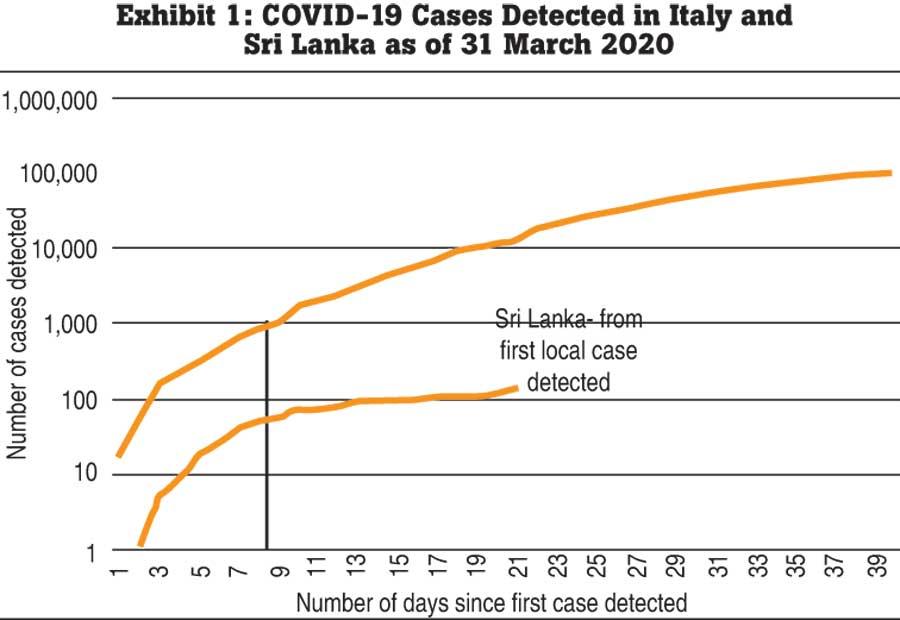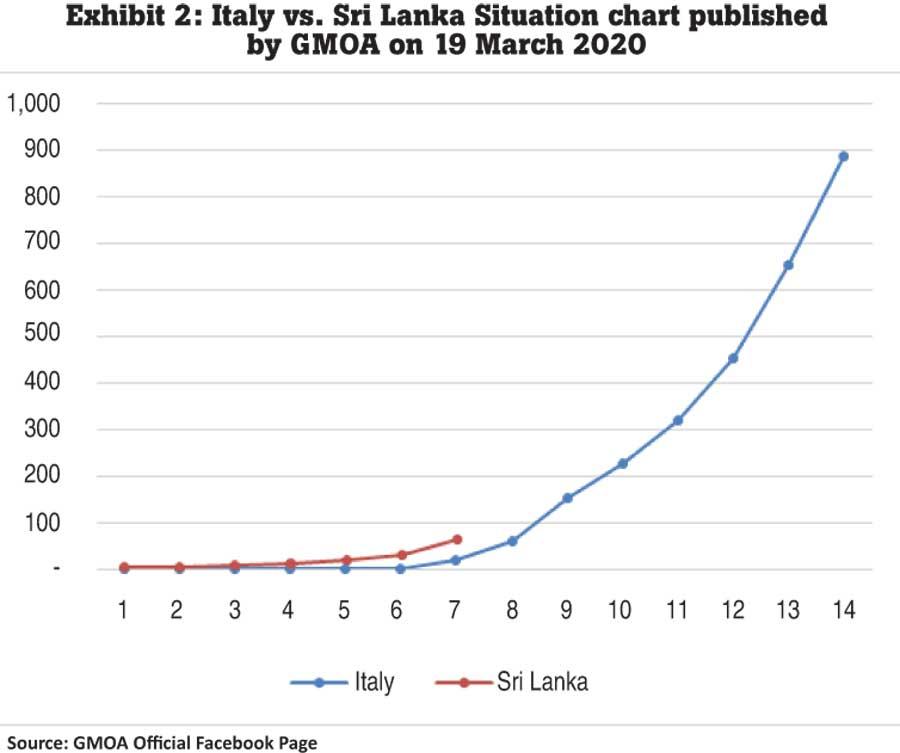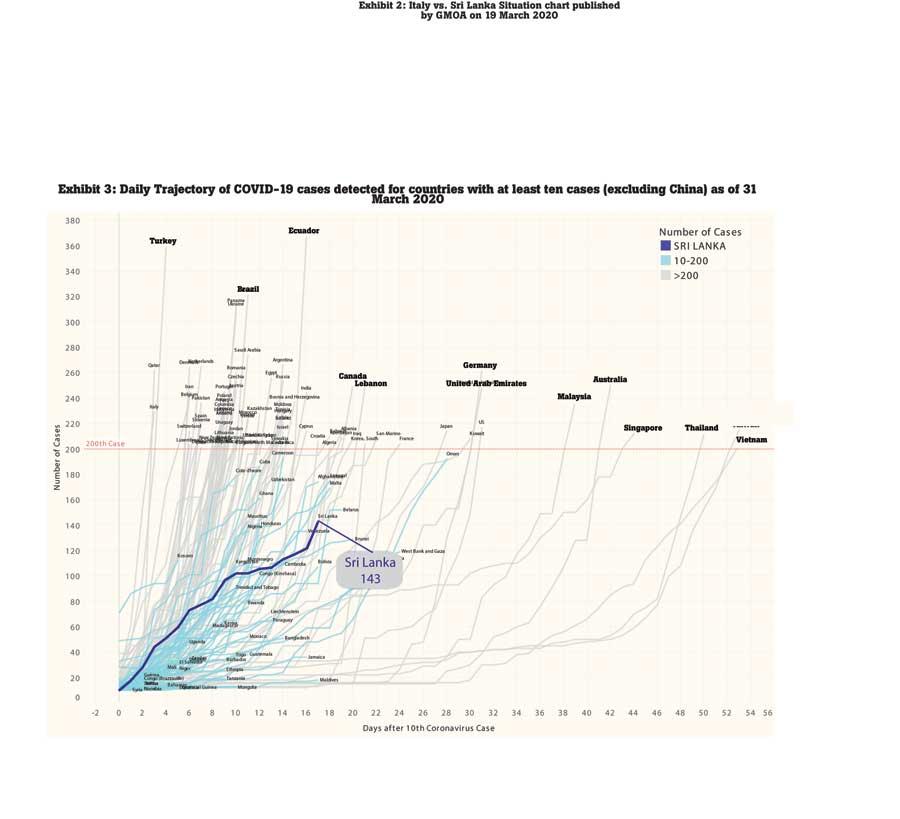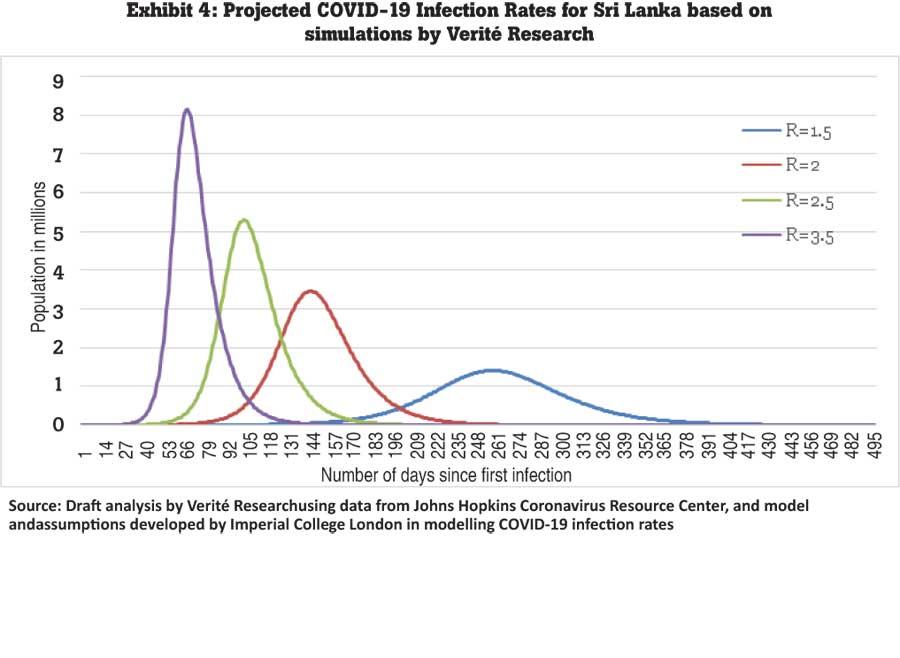03 Apr 2020 - {{hitsCtrl.values.hits}}

Part 1 of this fact check identified the GMOA’s error in calculating the initial trajectory of the virus spread in Sri Lanka relative to Italy. The GMOA’s calculations are in Exhibit 2 and FactCheck’s calculations are in Exhibit 1.
The GMOA’s statement also suggested that Sri Lanka’s spread will peak during the Sinhala and Tamil New Year period in April, if mitigation measures were not taken. This raises the question of not just the initial trajectory but also the future trajectory of the virus spread in Sri Lanka.
Therefore, Part 2 of the analysis aims to shed further light on (i) the growth of Sri Lanka’s reported cases relative to other countries; and (ii) when Sri Lanka’s detected cases could peak, based on the best available estimates and models of disease spread that are accessible at present. The modelling is in early stages and provided as the best available estimates in a context of many unknowns, and not as a factual claim.
FactCheck obtained data from the Johns Hopkins Coronavirus Resource Center, which tracks the number of cases of COVID-19 detected for all countries on a daily basis. Exhibit 3 compares the trajectory of Sri Lanka’s increase in detected cases, from the tenth case onwards, against all other countries that have ten or more cases. It shows Sri Lanka to be on a trajectory that is about midway between the most extreme cases (such as Italy) and the least extreme cases (such as Taiwan).
There is a constant flow of new information with regard to COVID-19, and it is undoubtedly difficult, as yet, to speak with certainty on the future spread of the virus. Epidemiological modelling of the spread depends critically on the assumption made about the rate of spread – that is, how many new people will be infected by an individual during their infection. Let’s call this number r.
Draft initial results from the standard epidemiological models, that are being simulated for Sri Lanka by Verité Research, are shown in Exhibit 4. It shows how the disease spread could play out for different mitigation strategies that achieve different levels of r. If mitigation measures are too mild, and r increases beyond 2, then the health care system may not be able to cope with the rate of growth in relation to even the small percentage of infected cases that would need hospital care. The strongest mitigation strategy modelled as r=1.5 show Sri Lanka overcoming the virus spread after 257 days, with the least pressure on the healthcare system.
A suppression strategy, which implies r<1, has not been modelled because it would result in Sri Lanka being back at square-one after the suppression measures are lifted and the virus begins to spread again before a vaccine is found. The lock-down measures needed for suppression measures may also not be sustainable, due to the economic survival consequences on human lives, which will need to be evaluated alongside the human cost of the spread of the virus.
Exhibit 1: COVID-19 Cases Detected in Italy and Sri Lanka as of 31 March 2020
*Vertical line indicates the date on which GMOA made its statement
Sources: Data from Johns Hopkins Coronavirus Resource Center and local and international news reports on detected COVID-19 cases in Sri Lanka and Italy
Exhibit 2: Italy vs. Sri Lanka Situation chart published by GMOA on 19 March 2020
Source: GMOA Official Facebook Page
Exhibit 3: Daily Trajectory of COVID-19 cases detected for countries with at least ten cases (excluding China) as of 31 March 2020
Source: Draft analysis done for Verité Research by Priyan Fernando, Chief Data Scientist at Alavi.ai; data from Johns Hopkins Coronavirus Resource Center
Exhibit 4: Projected COVID-19 Infection Rates for Sri Lanka based on simulations by Verité ResearchSource: Draft analysis by Verité Research using data from Johns Hopkins Coronavirus Resource Center, and model and assumptions developed by Imperial College London in modelling COVID-19 infection rates



28 Nov 2024 1 hours ago
28 Nov 2024 2 hours ago
28 Nov 2024 3 hours ago
28 Nov 2024 3 hours ago
28 Nov 2024 3 hours ago